Welcome to LeipziXP e.V.. This is your first post. Edit or delete it, then start writing!
Welcome to LeipziXP e.V.. This is your first post. Edit or delete it, then start writing!
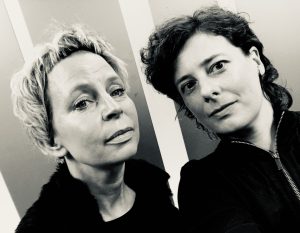
SiH2O
CFM arbeitet mit Fieldrecordings und daraus editierten Samples, Loops und Klangflächen. Die Geräusche von Wasser spielen seit jeher eine große Rolle, ob als Tropfen wie in der Installation The Drop und der Komposition Poolloop oder als Welle und Regen für Bühnenmusik. Mit dem Percussionisten Gerd Schenker hat sie in dem Stück Fluency fließendes Wasser und Regen vertont. Der manipulierte Klang eines Tropfen, die Zeit und der Raum in der er fällt, vermittelt den Eindruck der eigenen Fluidität.
Die Quarzklangschalen von Pina Rücker sind ursprünglich zur Züchtung von Siliziumkristallschichten hergestellt, welche in der Halbleiterindustrie zur Herstellung von Chips verwendet werden. Durch ihren industriellen Kontext sind sie klingende „Schmelztiegel für die digitale Zukunft“ und bieten sich daher als musikalischer Schmelztiegel für die uns bekannten Formen von Zeit an: historische Zeit, Zukunftszeit und Raumzeit, die in der Gegenwartszeit des Hörens verschmolzen werden. Kein analoges Instrument besitzt die Fähigkeit, den Raum so körperlich und mächtig mit Glocken-ähnlichen Klangflächen zu erfüllen. Pina Rücker wird im Konzert mit einem englischen Madrigal aus dem 17. Jh arbeiten, dessen Text ‚Springfluten der eigenen Tränen’ herbeiruft, um darin zu ertrinken.
Für SiH2O begegnen sich CFM und Pina Rücker in einer Improvisation, in der die Positionen von Wasser und Silizium im Klangbild erforscht werden und eine neue Komposition entstehen lassen.

SiH2O
CFM works with field recordings and uses them in samples, loops and soundscapes edited from them. The sounds of water have always played a major role, whether as drops as in the installation The Drop and the composition Poolloop or as waves and rain for stage music. With the percussionist Gerd Schenker, she set flowing water and rain to music in the piece Fluency. The manipulated sound of a drop, the time and space in which it falls, gives the impression of its own fluidity.
Pina Rücker’s quartz sound bowls were originally made to grow layers of silicon crystals, which are used in the semiconductor industry to make chips. Due to their industrial context, they are sounding „melting pots for the digital future“ and therefore offer themselves as musical melting pots for the forms of time known to us: historical time, future time and space-time, which are fused in the present time of listening. No analogue instrument has the ability to fill the space physically and so powerfully with bell-like layers of sound. In the concert, Pina Rücker will work with a 17th-century English madrigal whose text invokes ’spring floods of one’s own tears‘ to drown in.
For SiH2O, CFM and Pina Rücker will meet in an improvisation in which the sound aspects of water and silicon are explored, giving rise to a new composition.
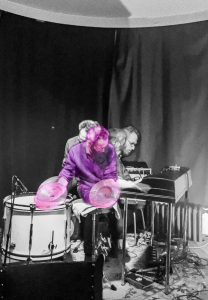
Hans Arnold ist Komponist und Musiker in den Bereichen experimenteller und improvisierter Musik. 2011-2016 studierte er bei Etienne Nillesen Schlagzeug an der „Hogeschool voor de kunsten Arnhem“ (NL) und wohnt seit 2016 als freischaffender Musiker und selbständiger Klavierbauer in Leipzig. Er ist Leader, Komponist und Schlagzeuger der Band Holzig, Schlagzeuger der Experimental Math Rock Band H.C.Behrendtsen, der Indietronica Band Elephants on tape, sowie in verschiedenen Projekten im Bereich Jazz, Avantgarde und improvisierte Musik. Sein Soloprojekt widmet sich sowohl songartigen als auch klangforschenden Strukturen. Dabei steht die präparierte, subtil durch Elektronik erweiterte Bass Drumim Fokus, die neben ihrer perkussiven Rolle ebenso als Resonanzkörper fungiert, der den Klang anderer perkussiver Objekte ergänzt und verfremdet, Obertöne zum Klingen bringt oder ein breites Rauschspektrum erzeugt.
The ensemble has its origin in the ZiXP 2019 festival and currently has 12 members from Leipzig and Halle.
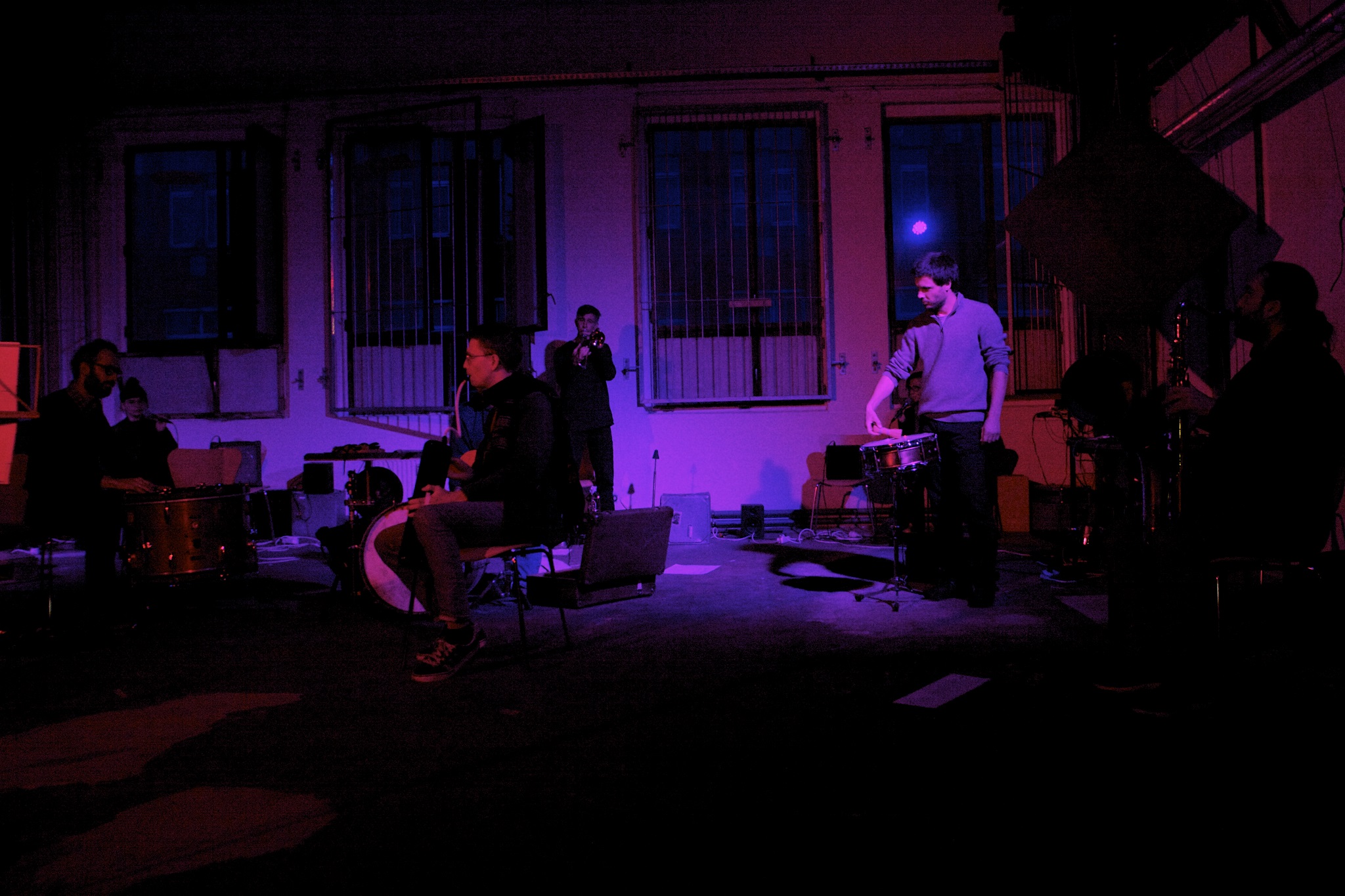 Photo D. Martinot
Photo D. Martinot
Part of its identity – still in definition – is its diverse instrumentation: a mix of acoustic and electro-acoustic instruments, with wind instruments, percussion, singing bowls, voice or electronics. Another key element is the diversity of its members‘ musical experience: Jazz, techno, new music, free improvisation, composition, theatre directing, classical music, ambient, etc. All of them also have a long experience with improvisation, strong individuality and their own projects in which they can express their own voice.
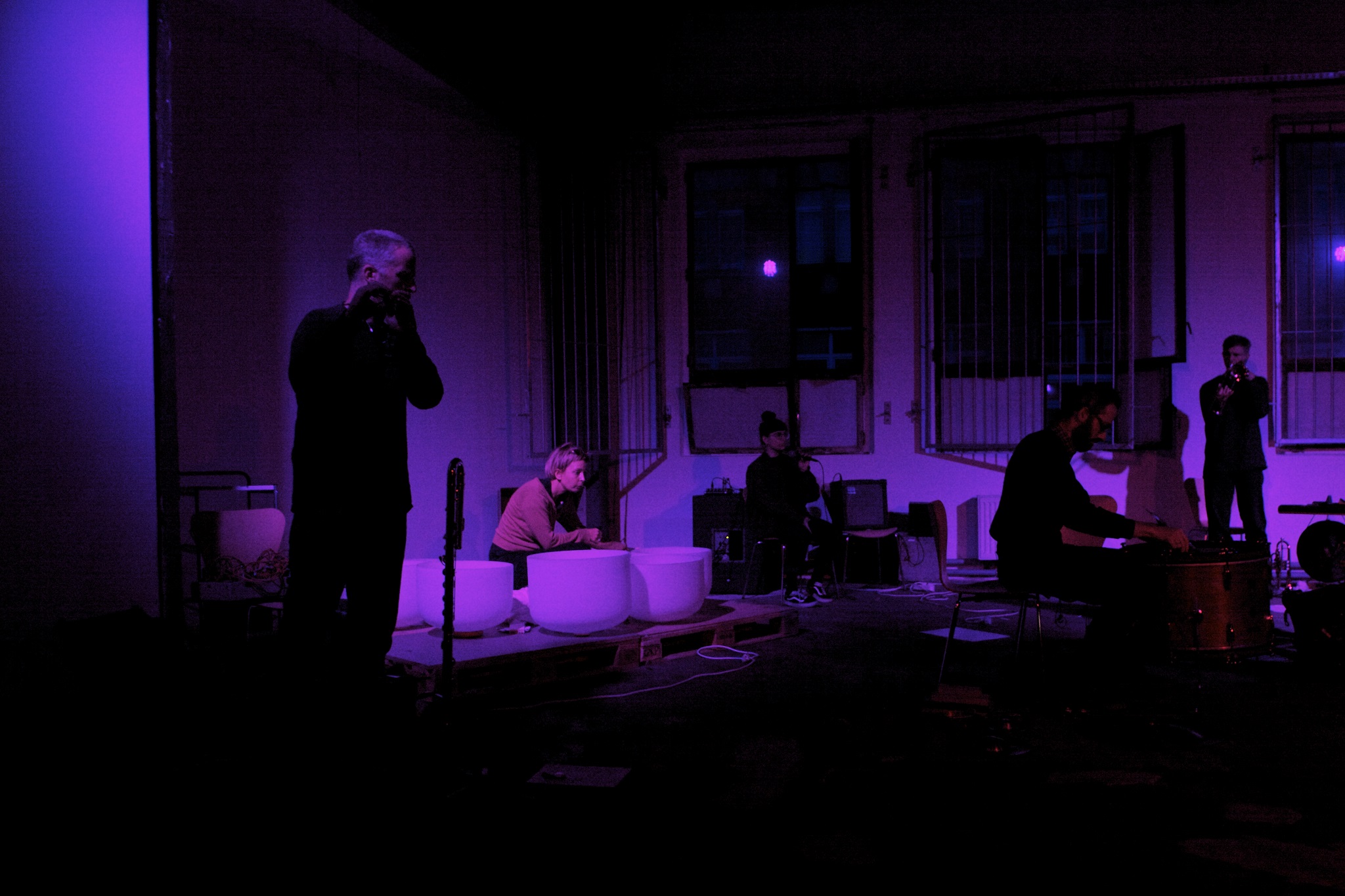 Photo D. Martinot
Photo D. Martinot
The ensemble engages itself with nondeterministic music: we want to play music in which the decision of the musicians are important and strongly influence the result. We want to establish a dialogue in practice between improvisation and composition and are interested in working with works that set a defined framework in which one can move freely.
The Ensemble is supported by Musikfonds with its FEB Grant in the frame of the Neustart/Kultur initiative and will be in residence from September to November to develop its language and repertoire.
For LiLe, it will work specifically (but not necessarily exclusively) with works from composer Christian Wolff.
Das Ensemble stammt direkt aus dem Festival ZiXP 2019. Es hat zurzeit 12 Mitglieder*innen aus Leipzig und Halle.
 Foto D. Martinot
Foto D. Martinot
Teil von seiner Identität – noch in Definierung, ist seine diverse Instrumentation: eine Mischung von akustischen und elektroakustischen Instrumenten, mit Blasinstrumenten, Perkussionen, Klangschalen, Stimme oder Elektronik. Andersteil ist die Diversität der Musikerfahrung seiner Mitglieder*innen: Jazz, Techno, neue Musik, freie Improvisation, Komposition, Theaterregie, klassische Musik, Ambient, usw. Alle haben aber Erfahrung mit Improvisation, starke Individualität und eigene Projekte in dem sie ihre eigene Stimme ausdrucken können.
 Foto D. Martinot
Foto D. Martinot
Das Ensemble beschäftigt sich mit teildeterminierter Musik: wir wollen Musik spielen, in der die Entscheidung des*r Musikers*in wichtig ist und das Ergebnis stark beeinflusst. Wir wollen einen Dialog in Praxis zwischen Improvisation und Komposition etablieren und haben Interesse mit Werken zu arbeiten, die einen definierten Rahmen setzen, indem man sich frei bewegen kann.
Das Ensemble ist vom Musikfonds mit seinem FEB-Stipendium im Rahmen der Initiative Neustart/Kultur unterstützt und wird von September bis November in Residenz sein, um seine Sprache und sein Repertoire zu entwickeln.
Für LiLe wird es speziell (aber nicht unbedingt ausschließlich) mit Werken des Komponisten Christian Wolff arbeiten.
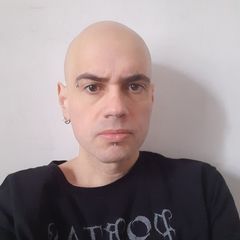 Miguel A. García, auch bekannt als Xedh, ist ein baskischer Künstler, der auf dem Gebiet der experimentellen Musik und Klangkunst arbeitet. Ausgebildet in Bildender Kunst, arbeitet er an elektroakustischer Komposition und Improvisation, wobei er Quellen verwendet, die durch die Manipulation von elektrischen Geräten gewonnen werden, und diese manchmal mit Klängen von akustischen Instrumenten und Feldaufnahmen mischt.
Miguel A. García, auch bekannt als Xedh, ist ein baskischer Künstler, der auf dem Gebiet der experimentellen Musik und Klangkunst arbeitet. Ausgebildet in Bildender Kunst, arbeitet er an elektroakustischer Komposition und Improvisation, wobei er Quellen verwendet, die durch die Manipulation von elektrischen Geräten gewonnen werden, und diese manchmal mit Klängen von akustischen Instrumenten und Feldaufnahmen mischt.
Sowohl solo als auch in verschiedenen Gruppen hat er zahlreiche Auftritte in Europa, Amerika und Asien absolviert. Er hat mit vielen Künstlern zusammengearbeitet, sowohl im Studio als auch live, wie unter anderem: Alfredo Costa Monteiro, Ilia Belorukov, Sebastien Branche, Francisco López, Francisco Meirino, Seijiro Murayama oder Jean-Luc Guionnet. Seine Arbeit erscheint auf mehr als hundert Alben bei Labels wie Bestiarie, Crónica Electrónica, Cyclic Law, In Solace Publishing, Intonema, Malignant, Mikroton, Moving Furniture, Pure Reactive, Sentient Ruin, Slaughter Recs, etc.
Gleichzeitig arbeitet er als Event-Organisator und Kurator. Er ist der Gründer des ausgestorbenen Le Larraskito Clubs, der Direktor des Zarata Fests (seltsames/ungewöhnliches Musikfestival) und Teil der Organisation des Hotsetan Zyklus in Azkuna Zentroa in Bilbao, allesamt Plattformen für die Verbreitung von unterschiedlicher, seltsamer und riskanter Musik und verwandten Disziplinen.
 Miguel A. García, also known as Xedh, is a basque artist who works on the field of experimental music and sound art. Trained in Fine Arts, he works on electroacoustic composition and improvisation, using sources obtained from the manipulation of electrical devices, sometimes mixing these with sounds of acoustic instruments and field recordings. Both solo and in different groups, he has performed extensively in Europe, America and Asia.
Miguel A. García, also known as Xedh, is a basque artist who works on the field of experimental music and sound art. Trained in Fine Arts, he works on electroacoustic composition and improvisation, using sources obtained from the manipulation of electrical devices, sometimes mixing these with sounds of acoustic instruments and field recordings. Both solo and in different groups, he has performed extensively in Europe, America and Asia.
He has collaborated with many artists, both in studio and live, such as, among others: Alfredo Costa Monteiro, Ilia Belorukov, Sebastien Branche, Francisco López, Francisco Meirino, Seijiro Murayama or Jean-Luc Guionnet. His work appears in more than a hundred albums with labels such as Bestiarie, Crónica Electrónica, Cyclic Law, In Solace Publishing, Intonema, Malignant, Mikroton, Moving Furniture, Pure Reactive, Sentient Ruin, Slaughter Recs, etc.
At the same time, he works as event organizer and curator, and he is the founder of the extinct Le Larraskito Club, the director of the Zarata Fest (strange/unusual music festival) and part of the organization of the Hotsetan cycle in Azkuna Zentroa in Bilbao, all of them platforms for the dissemination of different, odd and risky music and related disciplines.
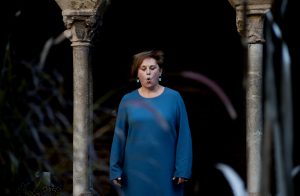
Der Akt des Singens ist eine Erzählung von Leere und Fülle.
Im Körper gibt es Resonanzräume, Räume, die wir ausloten, damit sie zu Räumen oder Kathedralen werden können. Es ist ein komplexer Akt, der eine ganze Alchemie des Flusses hervorruft, eine Konvergenz und Konvergenz und Divergenz von Räumen, die durch das Prisma von Spannungen und Filtern erlebt werden. Ich aktiviere diese Filter, wenn ich in jene besondere Klangspeläologie eintrete, die das Intra: Intra-Kranial, Intra-Kehlkopf, Infra-Bass, und Sub-Äquivalenzen von Frequenzen mit Additionen und Subtraktionen aus diesen Klangschichten, eine Art Mischung des Organischen.
Singen bedeutet auch, tief in das unaussprechliche Infra einzudringen, eine Art Introspektion, die ans Licht gebracht und eine Art Introspektion, die ans Licht gebracht und in einem spezifischen Kontext erlebt wird, dem der Zeitlichkeit und Akustik des Ortes. Es ist der Ort, der die Musik diktiert, ein unterirdischer Schrei, der aus dem Schatten hervortritt und sich durch Materie und Raum bewegt.

The act of singing is a tale of emptiness and plentitude. Within the body there are resonant spaces, spaces which we sound out so that they may become rooms or cathedrals. It is a complex act which summons a whole alchemy of flux, a convergence and divergence of spaces, experienced through the prism of tensions and filters. I activate these filters when I enter into that particular sonic speleology which is the intra: intra-cranial, intra-larynx, infra-bass, and sub-equivalencies of frequencies using additions and subtractions from these layers of sound, a sort of mix of the organic.
To sing is also to dig deep into the inexpressible infra, a sort of introspection brought out into the light and experienced in a specific context, that of the temporality and acoustics of the site. It is the site which dictates the music, a subterranean cry which emerges from the shadows and moves through matter and space.
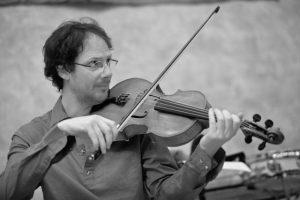
Cyprien Busolini begann sein Musikstudium auf der Bratsche mit klassischem Repertoire. Nach dem Konservatorium begab er sich auf ein neues musikalisches Terrain, da er sich seitdem der zeitgenössischen Musik und der Improvisation widmet.
Als Improvisator sucht er nach neuen Richtungen in seinem eigenen Musizieren. Dabei konzentriert er sich vor allem auf Klang, Räume und Stille, Richtungen, die er nun auch in eigenen Solokompositionen erforscht.
Zurzeit ist er Mitglied des Ensembles Dedalus und Onceim (ein improvisierendes Orchester in Paris).

Starting his musical studies on the viola with classical repertoire, Cyprien Busolini moved on towards a new music territory after the Conservatory, as he dedicated himself to contemporary music and improvisation since then.
Marek Brandt arbeitet als Multimedia Künstler im Bereich von Sound Art, Musik, Performance und Videokunst. Seine Sounds und Installationen wurden international gezeigt und veröffentlicht. Vielmals im öffentlichen Raum seine grösseren Video und Soundarbeiten waren z.B. Lichtfest, HBF Leipzig( Licht & Video + Sound) Wavel, Krakau (sound & mapping) Thomaskirche Leipzig (Sound), Luminale Frankfurt /M, (Sound + mapping m. Radiolux) Pecs, Ungarn (Lichtinstallation, Radio Soundstreaming). Er war Gründungsmitglied vom Laptoporchester Berlin / Endliche Automaten, veranstaltete die Headphone Festivals in Leipzig, und NIL (Netzwerk improvisation Leipzig) aktuell spielt er bei Radiolux. Und auch Solo.
Marek Brandt works as a multimedia artist in the field of sound art, music, performance and video art. His sounds and installations have been shown and published internationally. Often in public space his larger video and sound works were e.g. Lichtfest, HBF Leipzig( light & video + sound) Wavel, Krakow (sound & mapping) Thomaskirche Leipzig (sound), Luminale Frankfurt /M, (sound + mapping m. Radiolux) Pecs, Hungary (light installation, radio soundstreaming). He was a founding member of the Laptoporchester Berlin / Endliche Automaten, organized the Headphone Festivals in Leipzig, and NIL (Netzwerk improvisation Leipzig) currently he plays with Radiolux. And also solo.
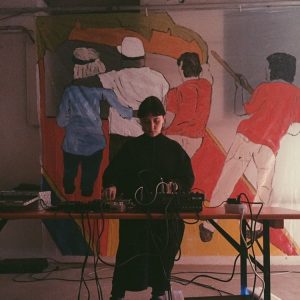
Hinter experimentellen Kanälen wie dem Tape-Label Tortellini Records („Not looking for perfection“), ihren DJ-Sets und ihrer Aktivität als Veranstalterin steht in Leipzig seit drei Jahren der Name KACKTUSS: Katharina Gerhardt arrangiert und produziert in diesem Projekt semi-analoge Ambient/Drone-Soundscapes, die auf der Modulation von Tapes basieren und sich in ihrem Klangrauschen niemals einengen lassen.

Behind experimental channels such as the tape label Tortellini Records („Not looking for perfection“), her DJ sets and her activity as an organizer, the name KACKTUSS has stood in Leipzig for three years: In this project, Katharina Gerhardt arranges and produces semi-analog ambient/drone soundscapes that are based on the modulation of tapes and never allow themselves to be constricted in their sound noise.
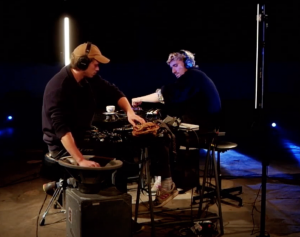 Martin Recker and Paul Hauptmeier studied composition at the Hochschule für Musik FRANZ LISZT Weimar. Already since 2009 they have been working as an artist duo under the name „Hauptmeier | Recker“ in the fields of composition, sound and multimedia art. In addition to works for theater and opera, live electronics, radio and electroacoustic music, their common focus is on sound installations in public spaces. They are co-founders of ZiMMT – Center for Immersive Media Art, Music and Technology – in Leipzig.
Martin Recker and Paul Hauptmeier studied composition at the Hochschule für Musik FRANZ LISZT Weimar. Already since 2009 they have been working as an artist duo under the name „Hauptmeier | Recker“ in the fields of composition, sound and multimedia art. In addition to works for theater and opera, live electronics, radio and electroacoustic music, their common focus is on sound installations in public spaces. They are co-founders of ZiMMT – Center for Immersive Media Art, Music and Technology – in Leipzig.
Hauptmeier|Recker create virtual sound worlds that playfully explore the concept of a natural listening experience. The use of a multi-channel speaker dome with the possibilities of immersion and movement of sound is further explored through the use of 13-channel impulse responses recorded by Hauptmeier-Recker at various locations. These impulse responses are mapped onto the surface of the dome, expanding the domain of spatial experience. Techniques of mimicking natural sounds and sound structures enhance synesthetic listening. The sounds are created through the use of analog sound synthesis tools such as a no-input mixer, life sampling of acoustic sound sources, and digital multi-channel processing and synthesis in Max-Msp.

 Forbidden Colour -Entre nous- Reihe für Lile Leipzig, reflektiert barocke Spielweisen aus einem experimentellen Blickwinkel heraus.Als Ausgangspunkt dient dem Ensemble die barocke Form „Ritornello“. Die Musiker*innen identifizieren verschiedene Phänomene, die mit der Barockmusik und mit Barockinstrumenten verbunden sind, wie zum Beispiel Klangfarbe, Dynamik, Form oder Verzierungen.Diese Phänomene nehmen sie aus dem gewohnten Kontext raus und interpretieren sie neu, ausgehend von ihren Erfahrungen aus zeitgenössischer, improvisierter Musik. Sie kreieren somit Räume, die uns gleichzeitig vertraut und noch fremd sind. So können sie sowohl für die Zu-hörenden Neues präsentieren, wie auch sich selbst und einander neu in dem sich ständig ent-wickelnden aber auch gleichbleibenden musikalischen Raum begegnen. Mit Hilfe von einfachen Formen und Elementen wird ein Austausch von unzähligen Ideen möglich. Risiken werden be-wusst eingegangen, die musikalische Reise geht tief in Richtung einer Grenze zwischen Vertrautem und Ungewohntem, und vielleicht auch darüber hinaus.
Forbidden Colour -Entre nous- Reihe für Lile Leipzig, reflektiert barocke Spielweisen aus einem experimentellen Blickwinkel heraus.Als Ausgangspunkt dient dem Ensemble die barocke Form „Ritornello“. Die Musiker*innen identifizieren verschiedene Phänomene, die mit der Barockmusik und mit Barockinstrumenten verbunden sind, wie zum Beispiel Klangfarbe, Dynamik, Form oder Verzierungen.Diese Phänomene nehmen sie aus dem gewohnten Kontext raus und interpretieren sie neu, ausgehend von ihren Erfahrungen aus zeitgenössischer, improvisierter Musik. Sie kreieren somit Räume, die uns gleichzeitig vertraut und noch fremd sind. So können sie sowohl für die Zu-hörenden Neues präsentieren, wie auch sich selbst und einander neu in dem sich ständig ent-wickelnden aber auch gleichbleibenden musikalischen Raum begegnen. Mit Hilfe von einfachen Formen und Elementen wird ein Austausch von unzähligen Ideen möglich. Risiken werden be-wusst eingegangen, die musikalische Reise geht tief in Richtung einer Grenze zwischen Vertrautem und Ungewohntem, und vielleicht auch darüber hinaus.
 Hans Arnold is a composer and musician in the fields of experimental and improvised music. 2011-2016 he studied percussion with Etienne Nillesen at the „Hogeschool voor de kunsten Arnhem“ (NL) and lives since 2016 as a freelance musician and independent piano builder in Leipzig. He is leader, composer and drummer of the band Holzig, drummer of the experimental math rock band H.C.Behrendtsen, the indietronica band Elephants on tape, as well as in various projects in the field of jazz, avant-garde and improvised music. His solo project is dedicated to both song-like and sound exploratory structures. The focus is on the prepared bass drum, subtly enhanced by electronics, which, in addition to its percussive role, also functions as a resonating body that complements and alienates the sound of other percussive objects, makes harmonics sound or generates a broad noise spectrum.
Hans Arnold is a composer and musician in the fields of experimental and improvised music. 2011-2016 he studied percussion with Etienne Nillesen at the „Hogeschool voor de kunsten Arnhem“ (NL) and lives since 2016 as a freelance musician and independent piano builder in Leipzig. He is leader, composer and drummer of the band Holzig, drummer of the experimental math rock band H.C.Behrendtsen, the indietronica band Elephants on tape, as well as in various projects in the field of jazz, avant-garde and improvised music. His solo project is dedicated to both song-like and sound exploratory structures. The focus is on the prepared bass drum, subtly enhanced by electronics, which, in addition to its percussive role, also functions as a resonating body that complements and alienates the sound of other percussive objects, makes harmonics sound or generates a broad noise spectrum.
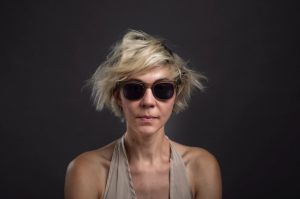
Martyna Poznańska is an interdisciplinary artist practicing active listening and field recording in tangent to working with visual tools such as video, installation, her own body, drawing, and listening workshops or soundwalks.
Responding to the climate crises related issues, she has been exploring the symbiotic relations between human and non-human beings. She has exhibited and performed internationally at the Akademie der Künste, Berlin (DE), Aperto Raum Berlin, Konsumverein Braunschweig (DE). She has worked with artists such as Hans Peter Kuhn (ÜBERGANG Martin-Gropius- Bau Museum), and Peter Cusack (There Will Be No Other Forest). In 2013 she received a grant from the Polish Ministry of Culture, and in 2018 scholarship from the City of Berlin.
Martyna completed a Magister degree in Spanish Philology a JU, Krakow, (PL), studied Sound Art at the UAL, London. In 2016 she obtained an MFA in Sound Studies at the UdK Berlin.
Martyna Poznańska ist eine interdisziplinäre Künstlerin, die aktives Zuhören und Feldaufnahmen praktiziert, die die Arbeit mit visuellen Werkzeugen wie Videos, Installationen, ihrem eigenen Körper, Zeichnungen und Hörworkshops oder Soundwalks verbindet. Als Reaktion auf die Klimakrise erforscht sie die symbiotischen

Beziehungen zwischen menschlichen und nicht-menschlichen Wesen. Sie hat international ausgestellt und performt, unter anderem in der Akademie der Künste, Berlin (DE), Aperto Raum Berlin, Konsumverein Braunschweig (DE). Sie hat mit Künstlern wie Hans Peter Kuhn (ÜBERGANG Martin-Gropius- Bau Museum), und Peter Cusack (There Will Be No Other Forest) gearbeitet. Im Jahr 2013 erhielt sie ein Stipendium des polnischen Kulturministeriums und 2018 ein Stipendium der Stadt Berlin.
Martyna absolvierte einen Magister in Spanischer Philologie an der JU, Krakau, (PL), und studierte Sound Art an der UAL, London. 2016 erhielt sie einen MFA in Sound Studies an der UdK Berlin.
Forbidden Colour -Entre nous- series for Lile Leipzig, reflects baroque playing styles from an experimental point of view.The starting point for the ensemble is the baroque form „Ritornello“. The musicians identify various phenomena associated with baroque music and baroque instruments, such as timbre, dynamics, form or ornamentation, which they take out of their usual con text and reinterpret based on their experiences in contemporary improvised music. They thus create spaces that are at once familiar and still foreign to us. In this way, they can present something new to the listeners, as well as encounter themselves and each other anew in the constantly evolving but also unchanging musical space. With the help of simple forms and elements, an exchange of countless ideas becomes possible. Risks are consciously taken, the musical journey goes deep towards a border between the familiar and the unfamiliar, and perhaps beyond.
text and reinterpret based on their experiences in contemporary improvised music. They thus create spaces that are at once familiar and still foreign to us. In this way, they can present something new to the listeners, as well as encounter themselves and each other anew in the constantly evolving but also unchanging musical space. With the help of simple forms and elements, an exchange of countless ideas becomes possible. Risks are consciously taken, the musical journey goes deep towards a border between the familiar and the unfamiliar, and perhaps beyond.
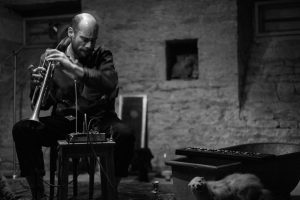
Timothée Quost is an improvisor, composer, trumpet player, timothée quost is a young french musician
walking along the borders of different musical practices.

Timothée Quost ist ein Improvisator, Komponist, Trompeter, Timothée Quost ist ein junger französischer Musiker,
der sich an den Grenzen verschiedener musikalischer Praktiken bewegt.
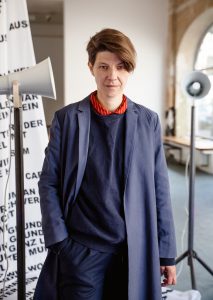
After an apprenticeship as a wood sculptor at the „Fachschule für das Holz- und Ivbeinverarbeitende Handwerk“, Michelstadt i. Odw., Anna Schimkat studied fine arts at the Bauhaus University in Weimar until 2004. In 2011, she completed her master’s degree at the „Hochschule für bildende Künste“ in the class for sculpture and architecture-related media in Dresden.
Schimkat has lived in Leipzig since 2006. As a visual artist, Anna Schimkat develops her works on the border between sculpture and sound. Whether as performance or installation, viewed in the respective context, she investigates the processes, causes and regularities of natural, social and culturally created reality. The question of how we make experiences in the first place, and how we sharpen our consciousness for these experiences, is one that she poses to herself in her works, but also to the viewer. In particular, she is interested in the conscious perception of sound spaces, which she works on in a multidisciplinary approach. The found sound of things and surroundings is inspiration and basis. It is her material from which she playfully explores and follows the respective concept, filtering out the sound, whirring, noise, clacking, plugging, crashing, humming – the specific sound, the specific form.
In addition to works in public spaces, her works and performances have been shown internationally in solo and group exhibitions, including La Station Vastemonde (St. Brieuc, France), Galerie Eigen+Art (Berlin), Galerie 3 Ringe (Leipzig), Goethe-Institut (Damascus, Syria), Kunstraum Michael Barthel (Leipzig), 24 Gauche Serie (Montreal, Canada), RumpstiPumsti (Music) (Berlin), Springhouse (Dresden), ausland (Berlin), Longbridge Light Festival (Birmingham, Great Britain), Festival of Experimental Music (Munich), at the Vadehavsfestival (Blavandshuk, Denmark), at Kunstverein Tiergarten (Berlin), Galerie für Zeitgenössische Kunst (Leipzig) or Kunstraum BB15 (Linz).

Anna Schimkat studierte nach einer Holzbildhauerlehre an der Fachschule für das Holz- und Elfenbeinverarbeitende Handwerk, Michelstadt i. Odw. bis 2004 an der Bauhaus Universität in Weimar Freie Kunst. 2011 schloss sie ihren Meisterschüler an der Hochschule für bildende Künste in der Klasse für Bildhauerei und architekturbezogene Medien in Dresden ab.
Seit 2006 lebt Schimkat in Leipzig. Als bildende Künstlerin entwickelt Anna Schimkat ihre Arbeiten an der Grenze zwischen Skulptur und Klang. Ob als Performance oder Installation, im jeweiligen Kontext betrachtet untersucht sie die Abläufe, Ursachen und Gesetzmäßigkeiten der natürlichen, gesellschaftlichen und kulturell geschaffenen Wirklichkeit. Die Frage, wie wir überhaupt Erfahrungen machen, und wie wir das Bewusstsein für dieses Zustandekommen von Erfahrungen schärfen, stellt sie sich mit ihren Arbeiten selbst, aber auch dem/r Betrachter*in. Im Speziellen interessiert sie sich für die bewusste Wahrnehmung von Klangräumen, die sie in einem multidisziplinären Ansatz bearbeitet. Der gefundene Ton der Dinge und Umgebung ist Inspiration und Grundlage. Er ist ihr Material, aus dem sie spielerisch forschend und dem jeweiligen Konzept folgend, das Klingen, Surren, Lärmen, Klacken, Stecken, Krachen, Brummen – den spezifischen Klang, die spezifische Form herausfiltert.
Neben Arbeiten im öffentlichen Raum waren ihre Arbeiten und Performances international in Einzel- und Gruppenausstellungen zu sehen, u.a. La Station Vastemonde (St. Brieuc, Frankreich), Galerie Eigen+Art (Berlin), Galerie 3 Ringe (Leipzig), Goethe-Institut (Damaskus, Syrien), Kunstraum Michael Barthel (Leipzig), 24 Gauche Serie (Montreal, Kanada), RumpstiPumsti (Musik) (Berlin), Springhouse (Dresden), ausland (Berlin), Longbridge Light Festival (Birmingham, Großbritannien), Festival für experimentelle Musik (München), beim Vadehavsfestival (Blavandshuk, Dänemark), im Kunstverein Tiergarten (Berlin), in der Galerie für Zeitgenössische Kunst (Leipzig) oder im Kunstraum BB15 (Linz).
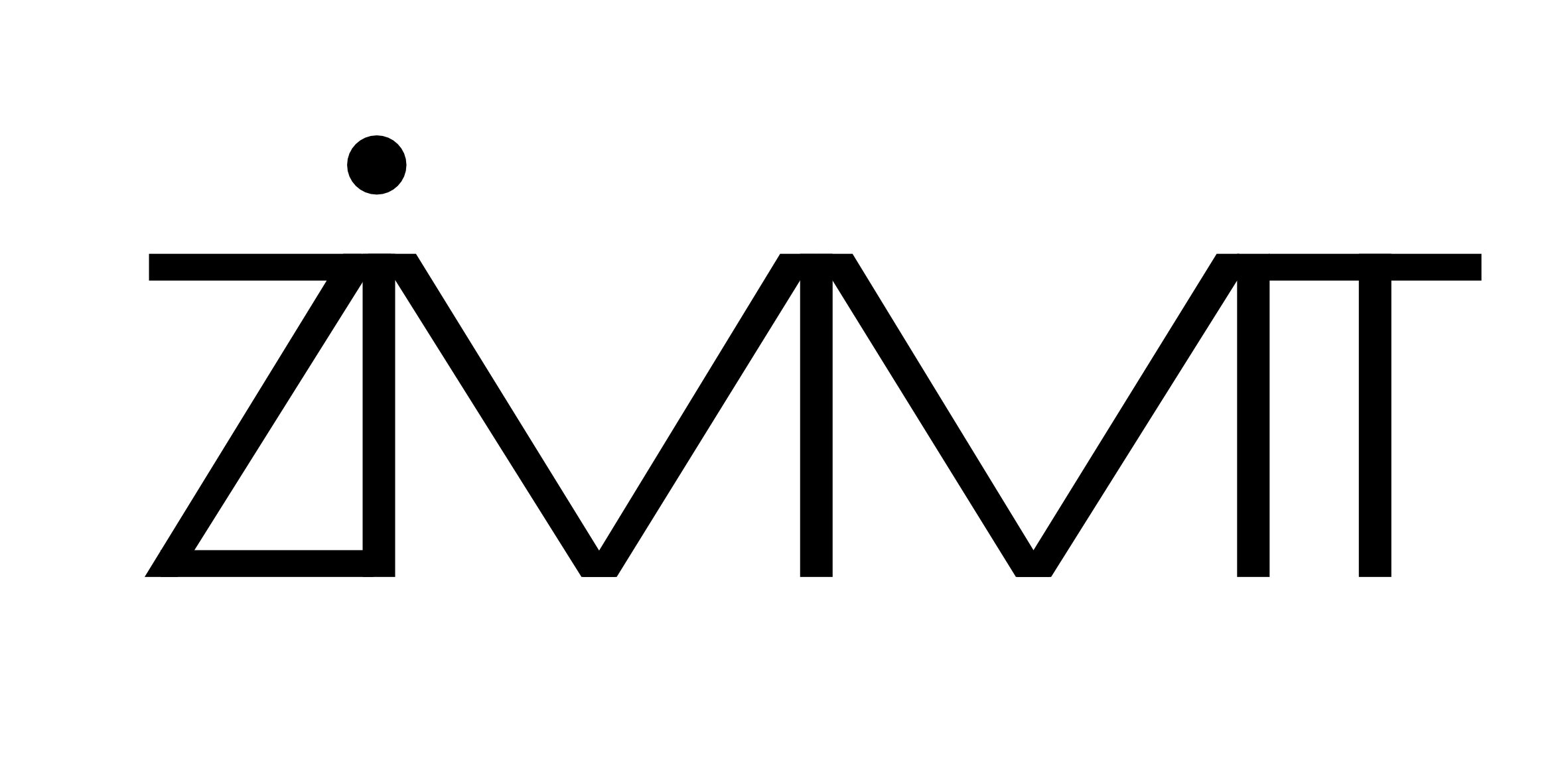
The ZiMMT – Center for Immersive Media, Music and Technology – is a hub for art, science and technology. In direct exchange about innovations in the field of immersive media technologies, developers, creative users and interested members of the public can come here together to test and experience the latest developments in the domain. You can currently follow current events around the initiative on Instagram and soon also on www.zimmt.net.
Please note: entrance only for members of the ZiMMT e.V.. Free registration available before the concerts.
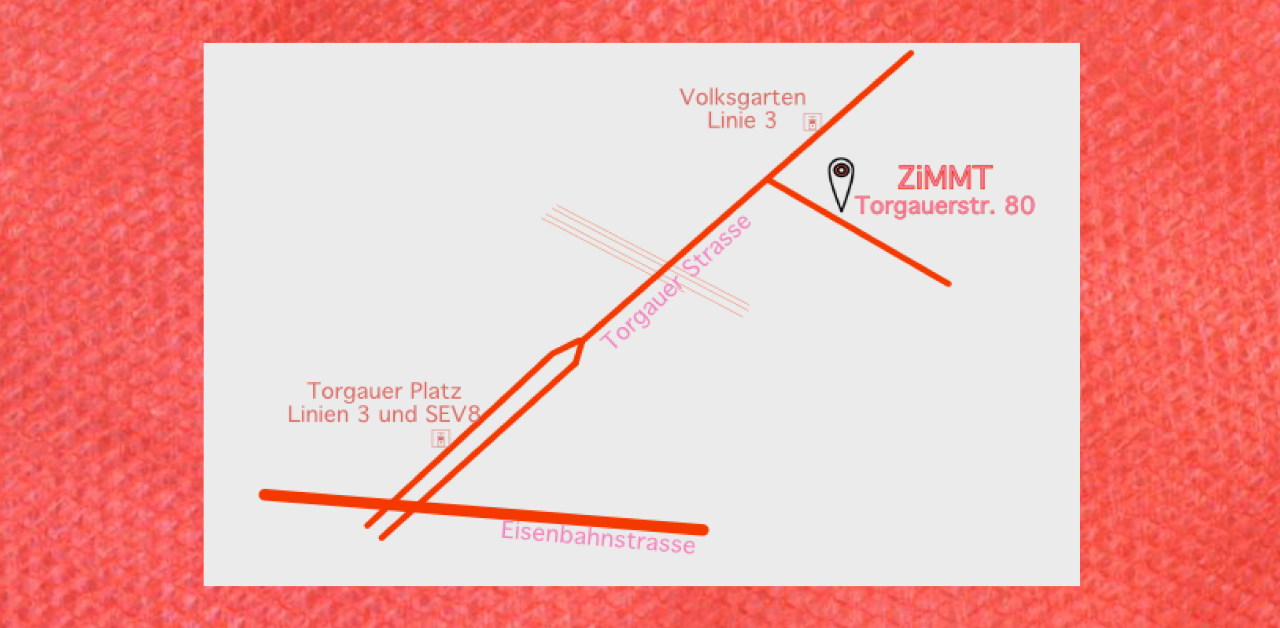

Das ZiMMT – Zentrum für immersive Medien, Musik und Technologie – ist Knotenpunkt von Kunst, Wissenschaft und Technologie. Im direkten Austausch über Innovationen im Bereich immersiver Medientechnologien können hier Entwickler*innen, kreative Anwender*innen und interessiertes Publikum zukünftig zusammenkommen, um neueste Entwicklungen zu erproben und zu erfahren. Aktuelle Geschehnisse rund um die Initiative könnt ihr momentan auf Instagram und bald auch auf www.zimmt.net verfolgen.
Hinweis: Betreten des Ortes nur für Vereinsmitglieder. Kostenlose Anmeldung vor den Konzerten.

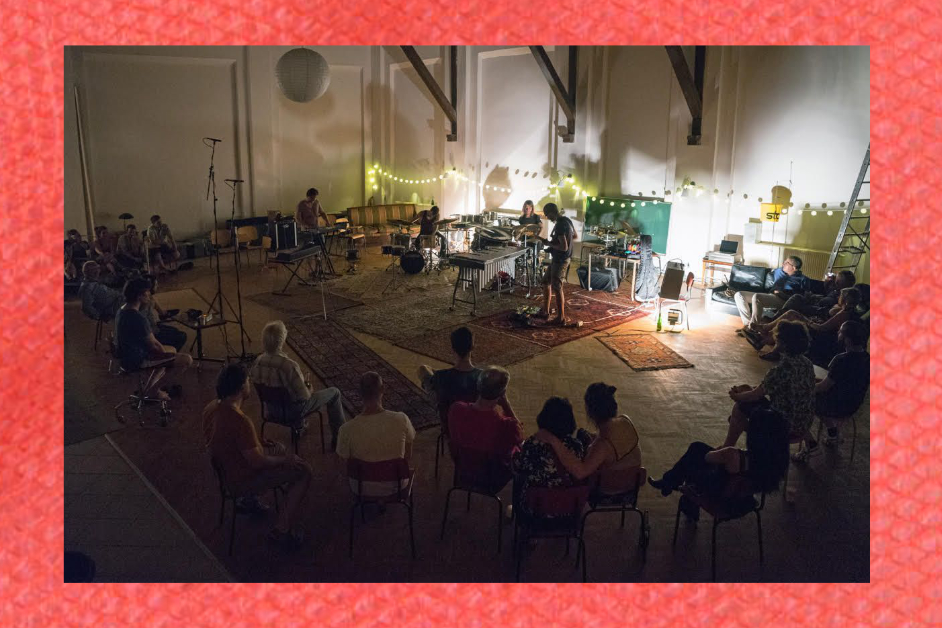
Aus der ehemaligen Turnhalle entstand die „Kulturnhalle“, ein Ort der Begegnung und verschiedener Kulturveranstaltungen.
Die Location hat sich u.a. intimen und besonderen Konzerten verschrieben. Sie zeichnet sich durch eine gute Akustik und einzigartige Atmosphäre aus.
Es gibt keine Bühne im herkömmlichen Sinn, sondern ein ganzheitliches Raumkonzept welches die Musiker in direkten Kontakt mit den Zuhörern stellt.
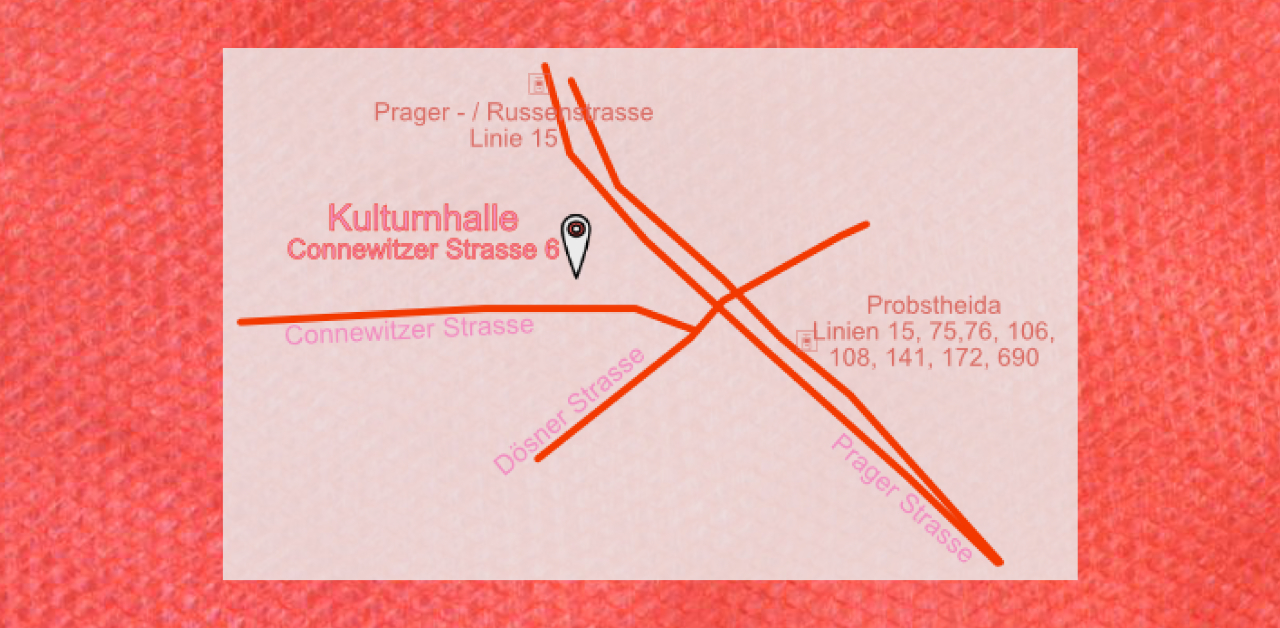

The old sport hall was turned into the „Kulturnhalle“, a place to meet and for various cultural events.
Among other things, the location has dedicated itself to intimate and special concerts. It is characterized by good acoustics and a unique atmosphere.
There is no stage in the conventional sense, but a holistic spatial concept that puts the musicians in direct contact with the audience.

